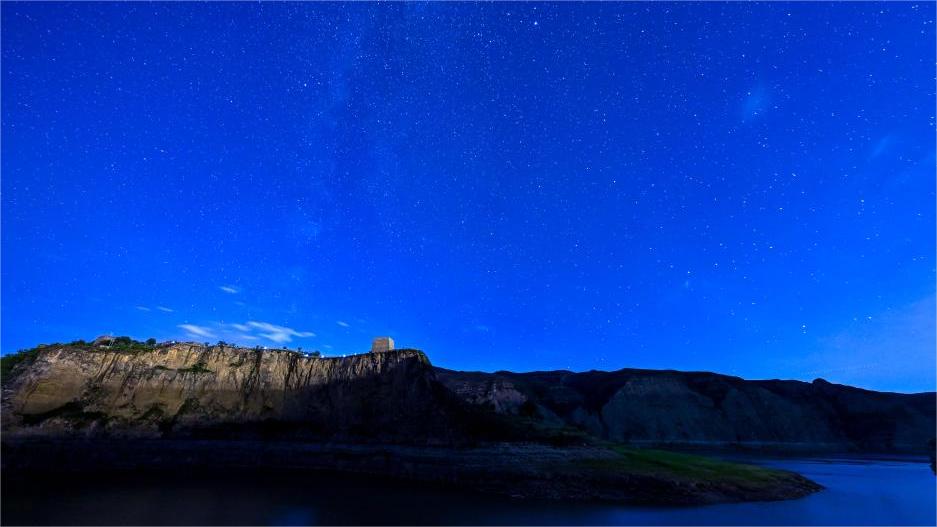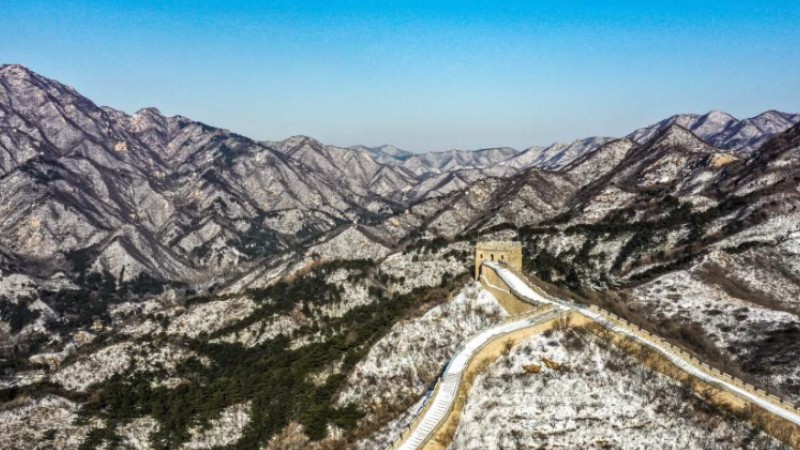Traditional hide skis transformed into modern sports equipment in Xinjiang

Craftsmen select horsehide for ski making at a traditional hide ski store in Altay City, northwest China's Xinjiang Uygur Autonomous Region, Dec. 13, 2023. The Altay region in Xinjiang is recognized as the "birthplace of human skiing," where the locals use hide skis, among the earliest types.
Over time, these hide skis have transformed from traditional hunting tools to modern sports equipment, becoming a cultural symbol of the region and a popular product in tourism. (Xinhua/Ding Lei)
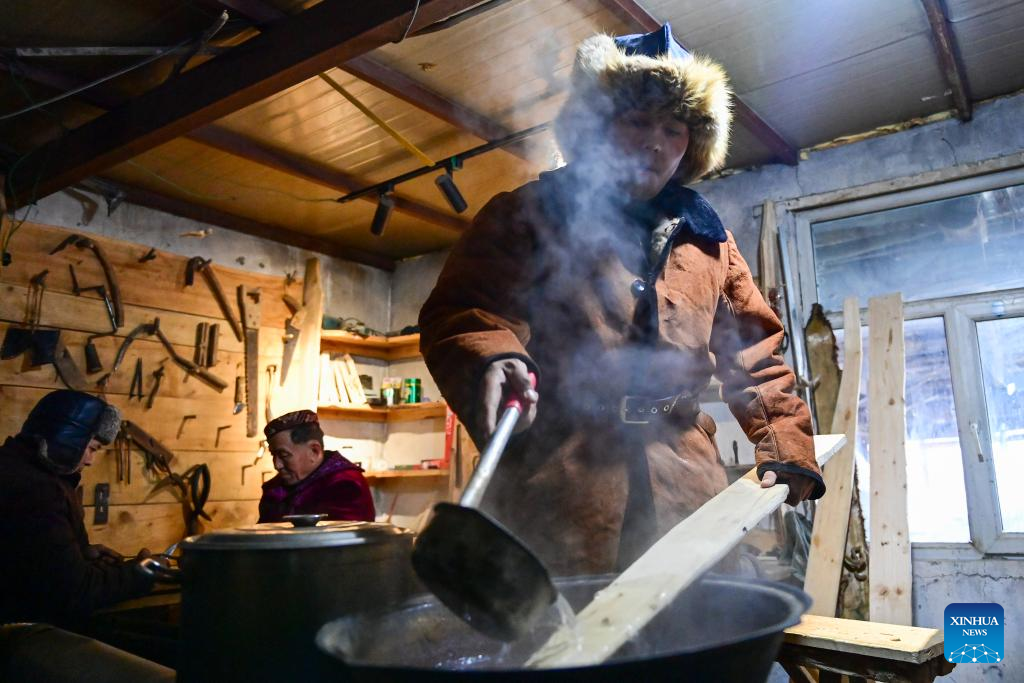
A craftsman processes wood planks before making hide ski at a traditional hide ski store in Altay City, northwest China's Xinjiang Uygur Autonomous Region, Dec. 20, 2023. The Altay region in Xinjiang is recognized as the "birthplace of human skiing," where the locals use hide skis, among the earliest types.
Over time, these hide skis have transformed from traditional hunting tools to modern sports equipment, becoming a cultural symbol of the region and a popular product in tourism. (Xinhua/Ding Lei)
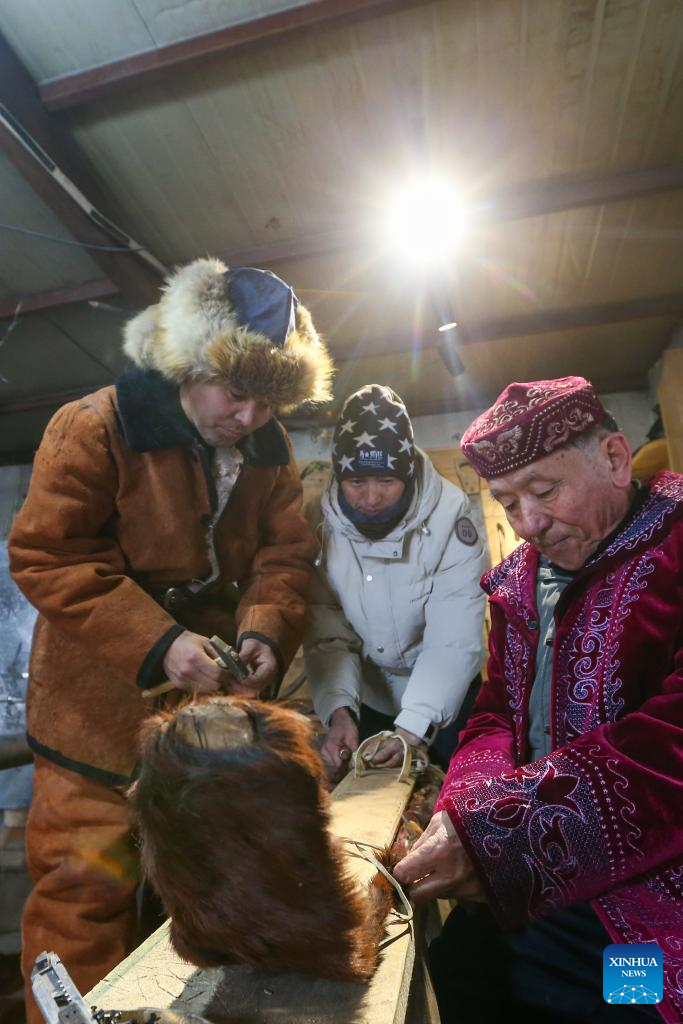
Craftsmen attach rawhide onto a wood plank to make hide ski at a traditional hide ski store in Altay City, northwest China's Xinjiang Uygur Autonomous Region, Dec. 20, 2023. The Altay region in Xinjiang is recognized as the "birthplace of human skiing," where the locals use hide skis, among the earliest types.
Over time, these hide skis have transformed from traditional hunting tools to modern sports equipment, becoming a cultural symbol of the region and a popular product in tourism. (Xinhua/Ding Lei)
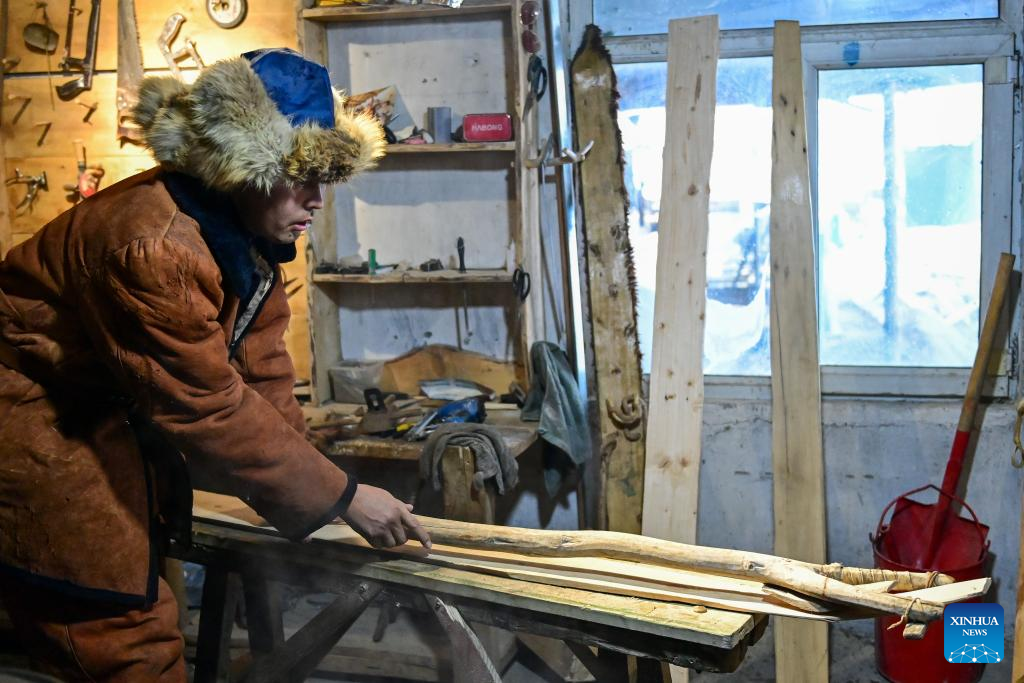
A craftsman processes wood planks before making hide ski at a traditional hide ski store in Altay City, northwest China's Xinjiang Uygur Autonomous Region, Dec. 20, 2023. The Altay region in Xinjiang is recognized as the "birthplace of human skiing," where the locals use hide skis, among the earliest types.
Over time, these hide skis have transformed from traditional hunting tools to modern sports equipment, becoming a cultural symbol of the region and a popular product in tourism. (Xinhua/Ding Lei)
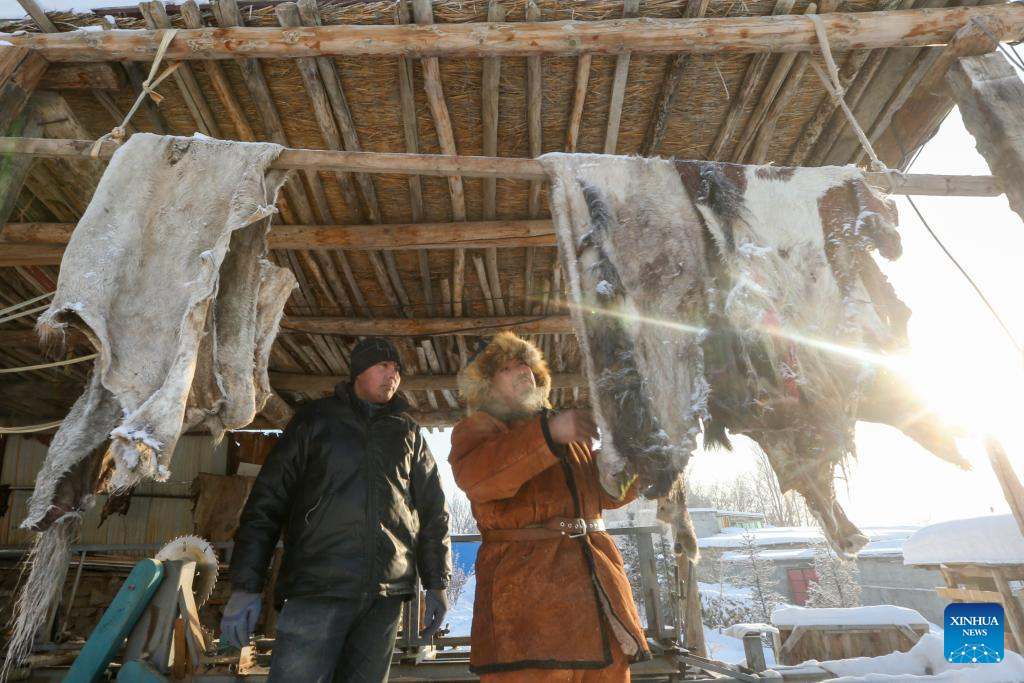
Craftsmen select horsehide for ski making at a traditional hide ski store in Altay City, northwest China's Xinjiang Uygur Autonomous Region, Dec. 13, 2023. The Altay region in Xinjiang is recognized as the "birthplace of human skiing," where the locals use hide skis, among the earliest types.
Over time, these hide skis have transformed from traditional hunting tools to modern sports equipment, becoming a cultural symbol of the region and a popular product in tourism. (Xinhua/Ding Lei)

A craftsman threads pieces of rawhide through the holes on a wood plank to make hide ski at a traditional hide ski store in Altay City, northwest China's Xinjiang Uygur Autonomous Region, Dec. 20, 2023. The Altay region in Xinjiang is recognized as the "birthplace of human skiing," where the locals use hide skis, among the earliest types.
Over time, these hide skis have transformed from traditional hunting tools to modern sports equipment, becoming a cultural symbol of the region and a popular product in tourism. (Xinhua/Ding Lei)
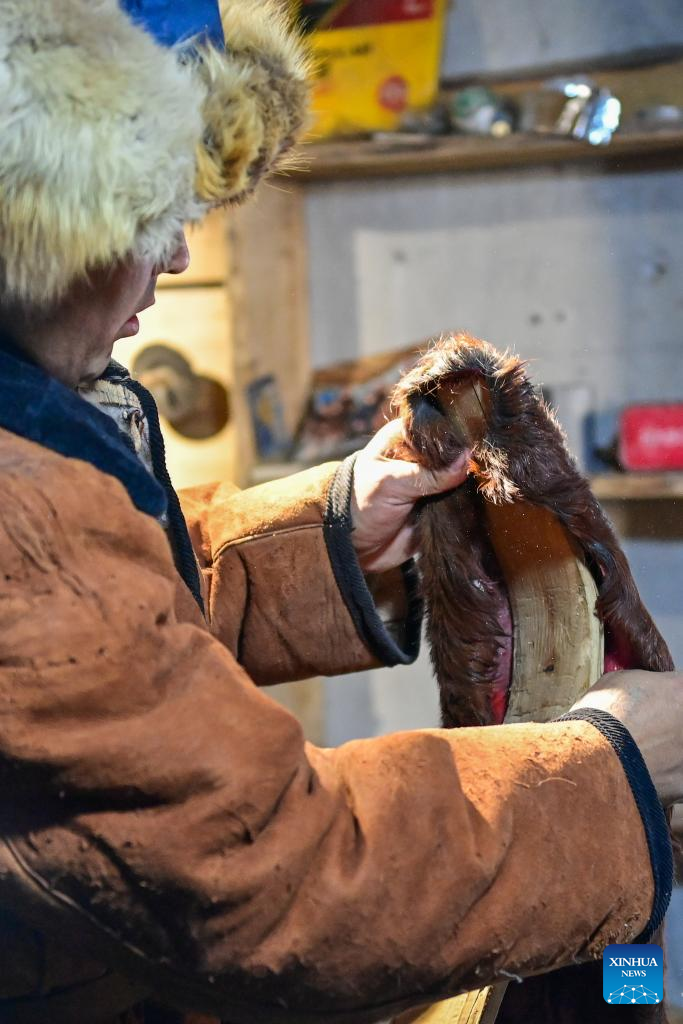
A craftsman attaches rawhide onto a wood plank to make hide ski at a traditional hide ski store in Altay City, northwest China's Xinjiang Uygur Autonomous Region, Dec. 20, 2023. The Altay region in Xinjiang is recognized as the "birthplace of human skiing," where the locals use hide skis, among the earliest types.
Over time, these hide skis have transformed from traditional hunting tools to modern sports equipment, becoming a cultural symbol of the region and a popular product in tourism. (Xinhua/Ding Lei)
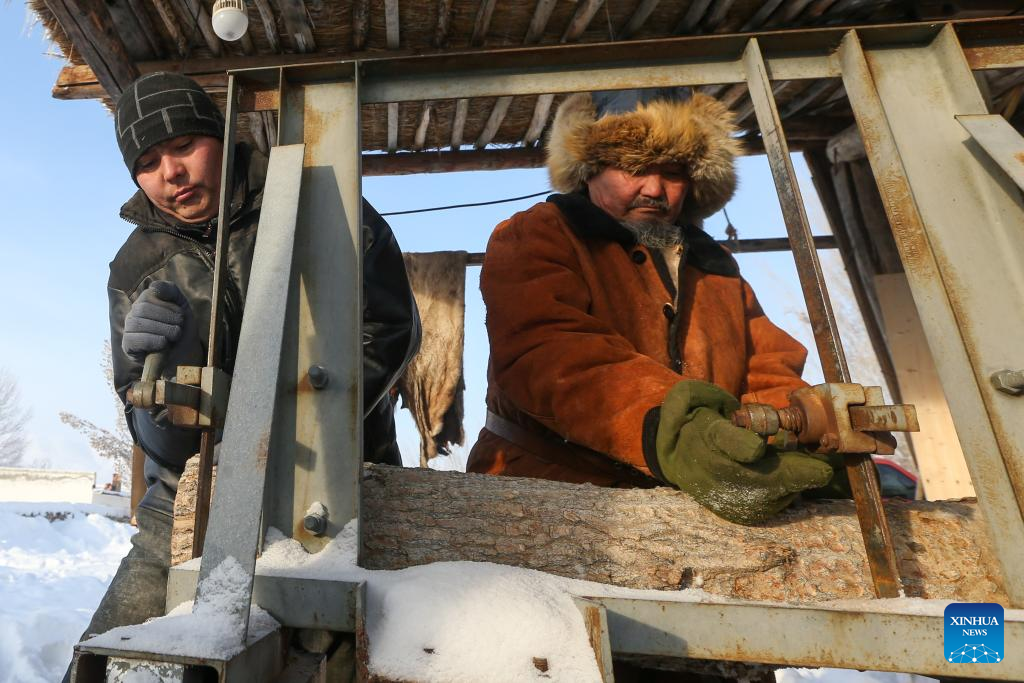
Craftsmen process woods before making hide ski at a traditional hide ski store in Altay City, northwest China's Xinjiang Uygur Autonomous Region, Dec. 13, 2023. The Altay region in Xinjiang is recognized as the "birthplace of human skiing," where the locals use hide skis, among the earliest types.
Over time, these hide skis have transformed from traditional hunting tools to modern sports equipment, becoming a cultural symbol of the region and a popular product in tourism. (Xinhua/Ding Lei)

A craftsman threads pieces of rawhide through the holes on a wood plank to make hide ski at a traditional hide ski store in Altay City, northwest China's Xinjiang Uygur Autonomous Region, Dec. 20, 2023. The Altay region in Xinjiang is recognized as the "birthplace of human skiing," where the locals use hide skis, among the earliest types.
Over time, these hide skis have transformed from traditional hunting tools to modern sports equipment, becoming a cultural symbol of the region and a popular product in tourism. (Xinhua/Ding Lei)
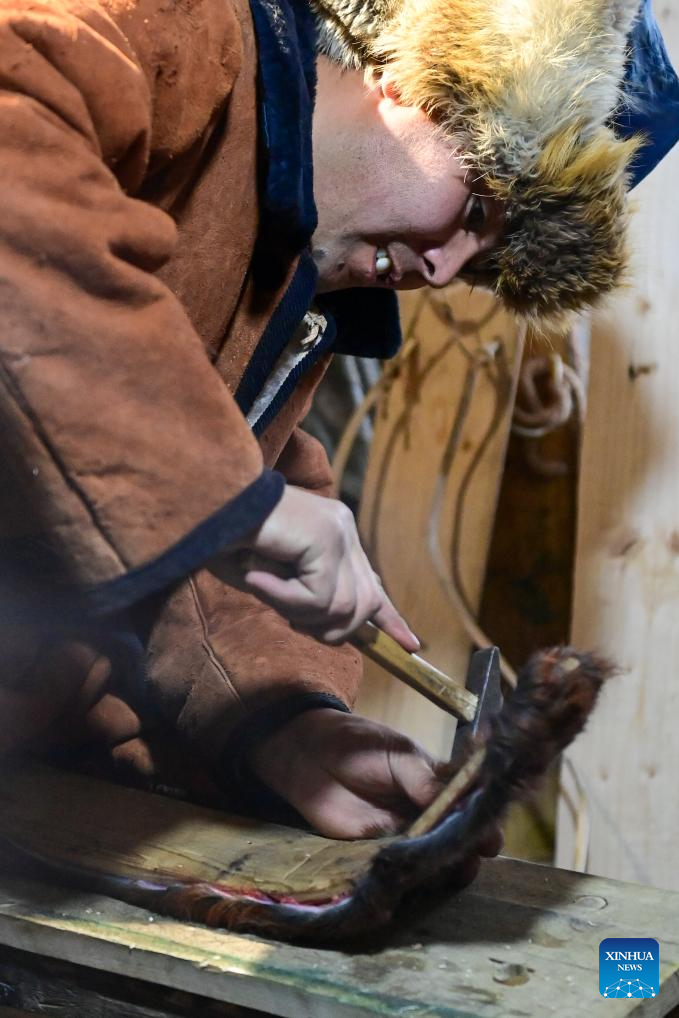
A craftsman attaches rawhide onto a wood plank to make hide ski at a traditional hide ski store in Altay City, northwest China's Xinjiang Uygur Autonomous Region, Dec. 20, 2023. The Altay region in Xinjiang is recognized as the "birthplace of human skiing," where the locals use hide skis, among the earliest types.
Over time, these hide skis have transformed from traditional hunting tools to modern sports equipment, becoming a cultural symbol of the region and a popular product in tourism. (Xinhua/Ding Lei)

This photo taken on Dec. 20, 2023 shows hide skis at a traditional hide ski store in Altay City, northwest China's Xinjiang Uygur Autonomous Region. The Altay region in Xinjiang is recognized as the "birthplace of human skiing," where the locals use hide skis, among the earliest types.
Over time, these hide skis have transformed from traditional hunting tools to modern sports equipment, becoming a cultural symbol of the region and a popular product in tourism. (Xinhua/Ding Lei)
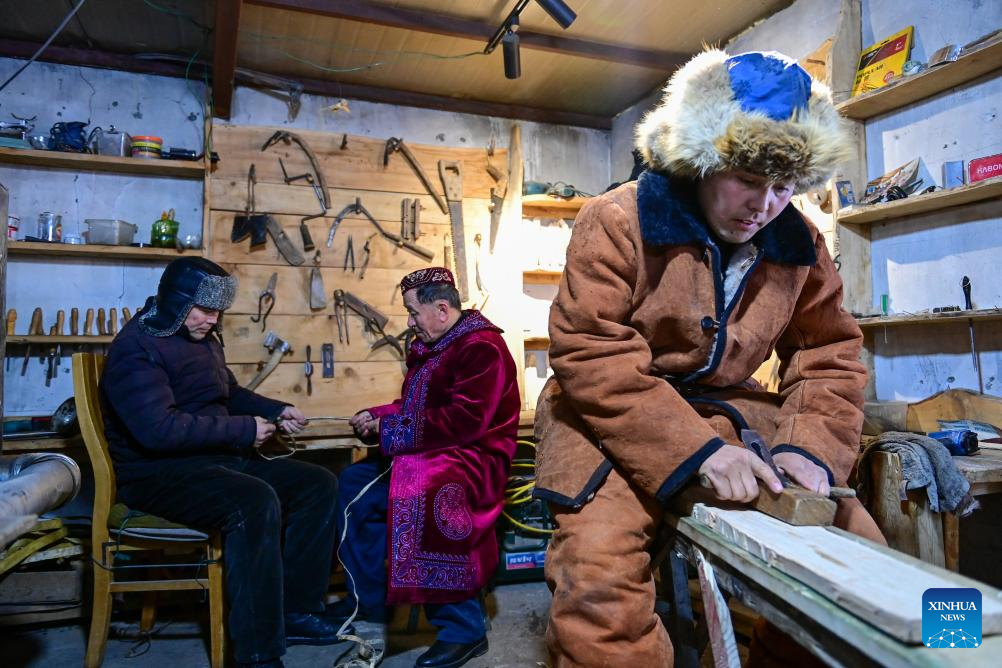
A craftsman processes wood planks before making hide ski at a traditional hide ski store in Altay City, northwest China's Xinjiang Uygur Autonomous Region, Dec. 20, 2023. The Altay region in Xinjiang is recognized as the "birthplace of human skiing," where the locals use hide skis, among the earliest types.
Over time, these hide skis have transformed from traditional hunting tools to modern sports equipment, becoming a cultural symbol of the region and a popular product in tourism. (Xinhua/Ding Lei)

Craftsmen make rawhide threads for bindings on hide ski at a traditional hide ski store in Altay City, northwest China's Xinjiang Uygur Autonomous Region, Dec. 20, 2023. The Altay region in Xinjiang is recognized as the "birthplace of human skiing," where the locals use hide skis, among the earliest types.
Over time, these hide skis have transformed from traditional hunting tools to modern sports equipment, becoming a cultural symbol of the region and a popular product in tourism. (Xinhua/Ding Lei)

This photo taken on Dec. 20, 2023 shows mini hide ski souvenirs at a traditional hide ski store in Altay City, northwest China's Xinjiang Uygur Autonomous Region. The Altay region in Xinjiang is recognized as the "birthplace of human skiing," where the locals use hide skis, among the earliest types.
Over time, these hide skis have transformed from traditional hunting tools to modern sports equipment, becoming a cultural symbol of the region and a popular product in tourism. (Xinhua/Ding Lei)
Photos
Related Stories
- Kazak Autonomous County of Mori speeds up development of clean energy in Xinjiang
- Development of Xinjiang impresses Pakistani media and think tank representatives
- Xinjiang's Urumqi City ramps up efforts to promote winter sports among different schools
- Schools integrate ice and snow sports into education curriculum in Xinjiang's Beitun City
- Experts reject Western propaganda against Xinjiang
Copyright © 2023 People's Daily Online. All Rights Reserved.






